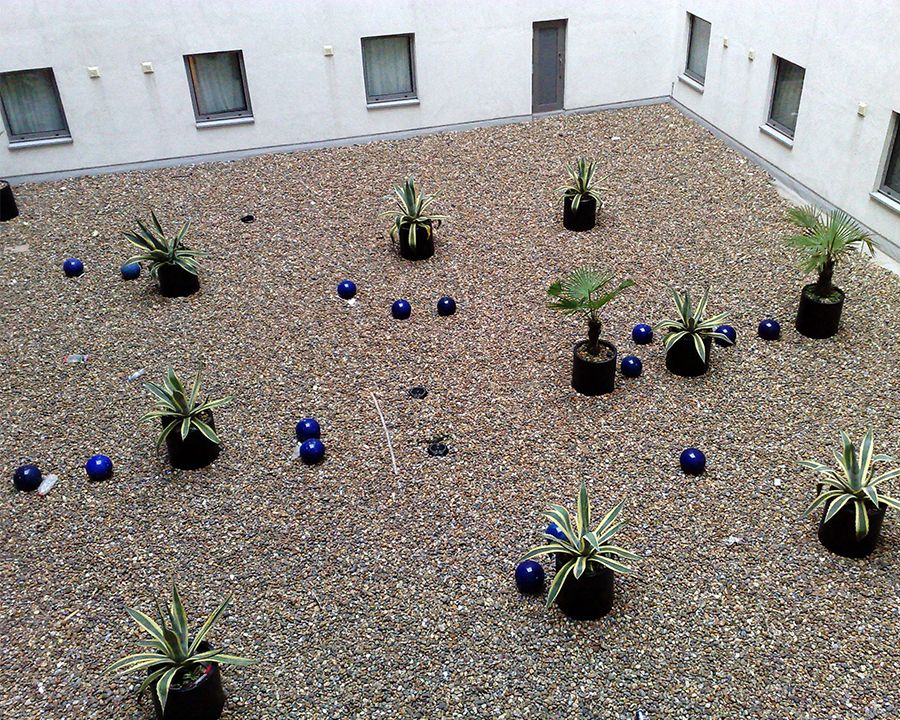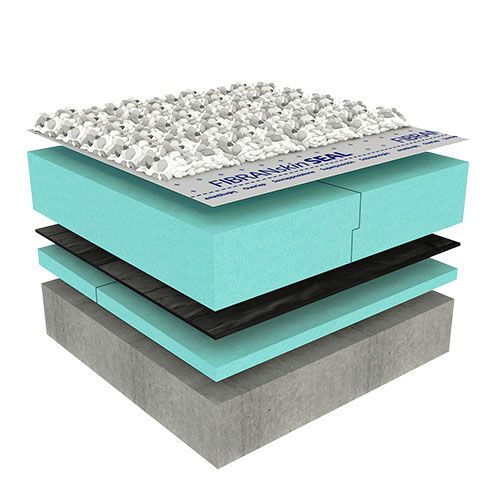NON-WALKABLE FLAT ROOF
Should be durable and easy to maintain. Access to HVAC outdoor units which are usually placed on the roof surface must be possible without maintenance crews damaging the waterproofing layer.
Usually, nonwalkable flat roofs are weighted down with a layer of gravel, which also additionally protects the below layers from exposure to sun and extreme temperature fluctuations. If this type of roof is thermally insulated with hard boards made of closed-cell extruded polystyrene material, maintenance workers can freely access any point on the roof surface without danger of damaging the waterproofing or thermal insulation layers.
Hint: the durability of a gravelled flat roof can be extended if we protect the vertical waterproofing from the effects of UV radiation and temperature swings by covering it with thermal insulation.

Systems

OPTIMO system
OPTIMO roofs are optimally layered flat roofs where instead of the heavy inclination concrete, the desired slope is achieved with FIBRANxps inclination thermal insulation boards.
The system was designed with the aim of reducing the flat roof load, as its slope is achieved with FIBRANxps INCLINE – special inclined boards of thermal insulation. Additionally, the thermally insulated inclination layer improves the assembly's total thermal resistance.

CLASSIC system
The conventional flat roof, where the desired slope is achieved using inclination concrete.
The advantage of the conventional flat roof system is that the waterproofing bitumen strips can be heat welded directly onto the concrete inclination layer. Its disadvantage, however, is the inclination layer's heavy load and higher thickness. As a rule, the inclination concrete must be at least 5 cm thick at the drain. In the more contemporary OPTIMO system, inclination thermal insulation boards are used instead of the heavy concrete.

PLUS system
An existing flat roof can be renovated by upgrading with the PLUS system. A thermal insulation layer is added. Optionally, or as needed, a new waterproofing layer is laid, or the inclination slope is corrected.
An existing flat roof with insufficient thermal insulation can be effectively upgraded and its energy efficiency enhanced with an additional layer of thermal insulation. After stripping the upper roof layers, thermal insulation boards are installed on the waterproofing layer and the inverted flat roof's two-levered roof drainage system is put in place. The final layer is a matter of choice and depends largely on our intended use of the roof's surface. However, this upgrade is only applicable if the waterproofing layer is intact. Otherwise, a roof renovation is required prior to upgrading its energy efficiency.
